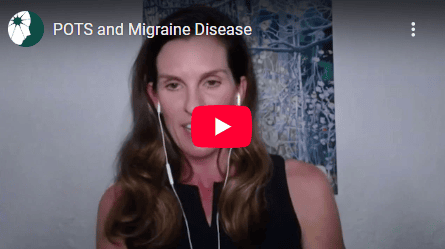Postural Orthostatic Tachycardia Syndrome (POTS) and Migraine: Exploring the Connection
Postural Orthostatic Tachycardia Syndrome (POTS) is a condition that often co-occurs with other health issues, including migraine disease. In this guide, we will explore the symptoms, causes, and treatments for POTS, and its connection to migraine.

What is POTS?
POTS is a disorder of the autonomic nervous system, specifically affecting the regulation of blood flow and heart rate. When a person with POTS stands up, their heart rate increases significantly without a corresponding drop in blood pressure. This can lead to a variety of symptoms, the most common of which are:
- Dizziness and lightheadedness when standing
- Fatigue due to the body working harder to regulate heart rate
- Palpitations or a racing heart when standing
Diagnostic Criteria for POTS
To diagnose POTS, doctors typically measure heart rate changes when transitioning from lying down to standing. A diagnosis is made when:
- Heart rate increases by at least 30 beats per minute within 3-5 minutes of standing, without a significant drop in blood pressure.
A tilt table test is sometimes used to confirm the diagnosis, but it is not always necessary.
Who is Most Affected by POTS?
POTS often occurs in younger individuals and can be triggered by a variety of factors, including:
- Surgery or long periods of inactivity
- Hormonal changes, such as during menstruation or pregnancy
- Connective tissue disorders, like Ehlers-Danlos syndrome
Causes of POTS
There are different types of POTS, each with its own underlying cause:
- Hyperadrenergic POTS: Caused by an overactive sympathetic nervous system (the fight-or-flight response).
- POTS associated with Ehlers-Danlos syndrome: Due to weakened connective tissue in the veins, leading to pooling of blood in the legs.
- Autoimmune-related POTS: When the immune system attacks the autonomic nervous system.
Factors that Exacerbate POTS Symptoms
Several factors can worsen POTS symptoms:
- Dehydration: Lack of fluids can worsen dizziness and fatigue.
- Low salt intake: Some individuals with POTS benefit from increasing their salt intake to help manage low blood pressure.
Managing POTS
While there is no cure for POTS, symptoms can often be managed with lifestyle changes and medication:
- Hydration: Drinking at least 8 glasses of water a day is essential.
- Compression garments: Wearing thigh-high compression stockings helps prevent blood from pooling in the legs.
- Exercise: Regular activity, especially low-impact exercises, can help manage symptoms over time.
Medications like fludrocortisone (to retain sodium and increase blood pressure), beta blockers (to reduce heart rate), and intravenous fluids may also be used.
POTS and Migraine Disease
There is a strong association between POTS and migraine. Many people with POTS experience frequent headache, including:
- Coat hanger headache: This type of headache involves the back of the head and the shoulders, often worsened by standing up.
- Migraine: POTS is considered a form of dysautonomia (a disorder of the autonomic nervous system), and this dysfunction may trigger or exacerbate migraine attacks.
Common Co-occurring Conditions with POTS
POTS often occurs alongside other conditions, including:
- Ehlers-Danlos syndrome: A connective tissue disorder that increases the likelihood of developing POTS.
- Diabetes: Can affect the autonomic nervous system and lead to POTS.
- Autoimmune diseases: These conditions can cause the immune system to attack the nervous system, leading to POTS.
When To Talk With a Healthcare Provider
If you suspect you have Postural Orthostatic Tachycardia Syndrome (POTS), it is important to seek out a healthcare provider familiar with the condition. While some primary care physicians may be able to diagnose and manage POTS, more complex cases may require a specialist, such as an electrophysiologist or cardiologist who focuses on autonomic nervous system disorders.
POTS is a complex disorder that affects many aspects of daily life, but with the right treatment plan, symptoms can often be managed. For those with migraine disease, understanding the link between POTS and migraine can help guide effective treatment strategies. If you experience symptoms of POTS, be sure to consult with a healthcare provider to explore the best treatment options for you.
This resource is based on HeadWise Episode 22, POTS and Migraine Disease with Vince Martin, MD
Published, 07/16/2019
Learn More
Subscribe for News and Updates
Stay informed with the latest news, updates, and episodes from the HeadWise podcast.

